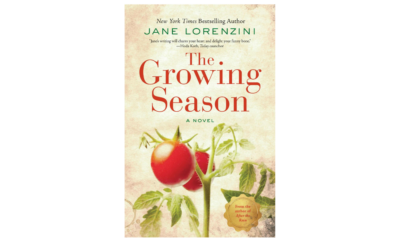How to Turn Your Lawn Into an Official Tennessee Smart Yard

Photo credit: Margaret Littman
There’s a long list of words you’d probably like to describe your yard: serene, low-maintenance, lush, perhaps native or pretty. How about smart with a Tennessee Smart Yard?
Yes, your garden can be smart. You can even make it official. The Tennessee Smart Yard program operated by University of Tennessee Extension will help you make your landscaping in tune with the local environment, protecting people and the ecosystem. This program, which was re-launched in 2020, has the resources to make it happen.
The curriculum highlights 72 different best practices to build a smart yard. Complete just 36 of them (after all, 36 inches equals a yard) to fill a yardstick and get certified. Once certified, you’ll be eligible to order an official sign for your yard and, depending on the county in which you live, may receive some prizes. But the real reward is knowing that you are making Tennessee healthier.
See more: Green Tips for Eco-Friendly Gardening
Tennessee Smart Yards is organized around nine basic principles. They are listed below, along with an example for each one:
- Right Plant, Right Place. This is where you think about which plants meet your needs. If you have kids and dogs running through a big swath of the backyard, you don’t want to plant tender vegetation that requires a lot of care and watering.
- Manage Soils and Mulch. Mulch can help prevent runoff of nutrients and minimize erosion. Choose organic mulch to protect your soil.
- Reduce, Reuse and Recycle. Stop bagging lawn clippings. Instead, leave them on the grass to feed new growth without store-bought fertilizer.
- Water Efficiently. Get a rain gauge so you can see how many inches of water Mother Nature is already giving your plants.
- Fertilize Appropriately. Don’t feed your plants right before it rains because all that happens then is that your fertilizer gets washed into the stormwater system.
- Manage Yard Pests. Try horticultural oils and insecticidal soaps before using broad-spray chemicals.
- Reduce Stormwater and Pollutants. Pick up after your pets – you want to reduce animal waste in the stormwater runoff.
- Provide for Wildlife. Plant flowers that attract pollinators such as bees and butterflies.
- Protect Water’s Edge. Give rivers and streams some space by creating a “no mow” zone close to the water’s edge where vegetation can grow and wildlife can find habitats.
A downloadable workbook and corresponding online videos provide additional resources on how to master these best practices. You can also download an interactive yardstick to keep track of your progress. Doesn’t that sound smart?
See more: How To Manage Good and Bad Garden Bugs
Smart and Wise
Being smart also means being waterwise. You may think of the strategies for saving water in your yard. But you don’t have to be in your garden to affect the watershed. For example, perhaps you like to wash your car in your driveway, garden hose running and the radio blasting. The dirty water runs off the trunk of your car, down your driveway and into the street. At a commercial carwash, by contrast, they capture the dirty water, process out chemicals and pollutants and reuse the water for the next customer. It saves them money and reduces contaminants in the environment.















Leave a Comment